Oathmark: Battles Of The Lost Age | First Impressions
March 5, 2020 by crew
It’s no secret that I’ve been rather taken by the look of Oathmark: Battles Of The Lost Age. Osprey Games and Joseph A. McCullough (of Frostgrave and Rangers Of Shadow Deep fame) have been working on this game for quite a while and it’s now due to be released in April.
We were able to get our hands on an early copy of the rulebook and thought that we should take the time to dive into and tell you our thoughts on what we’ve discovered within its pages. In many ways, you could consider this a preview, in other ways, a review. We’ve still got a lot to sink our teeth into with this game and videos are coming soon but for now, let’s take a peek at some first impressions of this new mass battle game.
What Is Oathmark: Battles Of The Lost Age?
At its heart, Oathmark is a game which follows rather typical Fantasy guidelines. You have Men, Elves, Dwarves (the correct spelling), Orcs and Goblins all vying for control of the land. Kingdoms are built and great battles are fought in the name of legends of the age and monsters dwell in the dark places of the world.
All of this comes together to present a new mass battle wargame which uses what some would call Rank n’ Flank or Rank And File mechanics in order to tell the tales of war on the tabletop.
Some core concepts of this, of which we’ll dive into more of later, is that you’ll have heroes and champions leading the way whilst they are flanked by big blocks of infantry, cavalry, artillery and monsters. There is a focus on that classic element of tactical decision making where movement is just as key as what weapons your warriors are armed with. If you’ve come from games like Warhammer Fantasy Battles (R.I.P) then you’ll immediately be familiar with the concepts presented in Oathmark.
There are some interesting twists in the tale however when it comes to this game. The first is that whilst you can build yourself a force exclusively of Elves or Dwarves, there is no reason why you can’t mix and match to suit your own narrative. If you want to play games using a mix of Elves and Dwarves who have banded together as the ancient races of the land; do it. If you want to play as a band of Humans who call on the aid of murderous Goblins in order to do their dirty work; give that a go!
This is all done thanks to the Kingdom and Campaign system that we’ll go into later. Essentially, this takes the idea of a campaign game from skirmish games like Frostgrave and builds that advancement into that of an entire Kingdom, not just a small warband of warriors. It’s pretty fascinating and what I would say is very much the unique selling point of Oathmark.
So, with those basic concepts outlined it’s time we dived in and talked about the mechanics of the game, the gears churning away in the background.
Fighting Battles In Oathmark: Battles Of The Lost Age?
Games of Oathmark are driven by handfuls of d10 and use figures which are 28mm in scale and on bases which are typically 25mm x 25mm for infantry and characters. There are of course different bases sizes for various creatures and mounted units in the game too and thankfully all of those details are included in their unit entries.
The core of a round in Oathmark begins with an Initiative roll. Initiative is important in the game but not a winning roll right out of the gate. This is thanks to the way units activate alternately between the primary and secondary player. Regardless of your initiative though, when you have control though you have to choose a unit to Activate.
Once you’ve chosen a unit, you roll to Activate it, rolling against its relevant statistic. If the result of both dice is above the activation threshold of the unit then you’ll be able to take two actions with it. If you failed to do so, you’ll still be able to activate them but you’ll be restricted to just one simple action. This effectively throws into the game a sense of fog of war and models the breakdown of communication between units and their commanders. As you might imagine, certain armies are more reliable than others with Dwarves and Elves having a higher Activation statistic when compared to the likes of scrabbling Goblins!
If your unit has managed to Activate then it is then allowed to take two actions. This means that the unit of character can decide to Move and perform all manner of different manoeuvres (including charge into combat) or Shoot at your foes. There are also all manner of Special Abilities which can also be activated but there are more than I care to go into here. Suffice to say, you will have plenty to think about tactically.
Movement is at the core of Oathmark and as mentioned above really does make up a lot of your tactical decision making in-game. You will have to work out how best to position your units for good charges into the flanks of your enemy and use the terrain to your advantage. As well as just moving forward, you’ll also be able to benefit from typical Rank n’ Flank mechanics like pivoting, wheeling and about facing to get your unit into the best position.
Fighting Your Mass Battles
All of this is of course so you can do the fun bit. It’s time to kill stuff! Both Shooting and Combat are handled in very much the same way by building up dice pools. As standard for combat, you take the Combat statistic for a particular unit entry and then multiply it by the number of models in the front rank to get this pool. For a standard unit of infantry, this would normally be five dice as an example.
After you’ve worked out your Combat Dice Pools for both the attacking and defending units both players roll, aiming to hit a Target Number (TN) which is determined (to begin with) by comparing your Combat value against the opponents Defence (Defence - Fight = TN) plus a variety of factors like the number of full rank you have behind you and whether or not the enemy is in cover or fighting from a higher elevation.
Both units roll their dice at the same time and you’ll compare your results on the d10 to the TN. For every hit which matches or exceeds the TN, you’ll score a hit. This can cascade as well. If you beat that TN by five or ten more than you needed you’ll do even more damage!
Damage is then applied to the Health of a unit, removing figures for each hit that you suffered. So, much like in older Rank n’ Flank games you’ll be taking models off the table one-by-one. You do this from the back and the final figure in your unit should always be your Officer who will fight to the last.
The person who causes the most hits has then won the combat and can either decide to step back 1” from the combat or force the enemy to withdraw either 1” or 6”. This can cause other units to be moved around on the tabletop but it effectively gives you the option to mould the shape of the battlefield to suit you. I do like this as it means that a unit isn’t entirely locked into combat with its foe forever. You might get a chance to escape your foe and run off to regroup!
Shooting is more or less the same as it works off the same TN mechanic. You’ll compare your Shoot against the enemies Defence (Defence - Shoot = TN). However, the enemy, of course, doesn’t get to roll against you at the same time meaning that any hits you can inflict with shooting from afar really do help you out when it comes to subsequent combats!
There are a few more special abilities available here too. Some units might have access to the Shielding special skill which allows them to remove a number of dice from the opponent's pool before they strike at them. It’s well worth diving in and looking at all of these for special abilities for your units when you’re building an army as they can be key!
Magic, Commanders & Champions
Of course, this wouldn’t be a Fantasy game without other things like Spellcasters, Commanders and Champions in the mix. These are more advanced rules that you don’t need when you first start playing but they really add to the flavour and tactical elements available in Oathmark.
Commanders take on the role of watchful tacticians. They can fight in combat of course but their real role is to command the battlefield from afar. You know how we talked about rolling to activate units one-by-one, back and forth with your opponent? Well, with a Commander in tow you get to activate more units! A Commander comes with the intuitively named Command ability which allows them to activate not just themselves but a number of units equal to their ability within 6” of them. They can also help units within 6” of them activate that little bit easier, giving them three dice to roll when seeing if they got the message from the higher-ups!
This is a mechanics which might be very reminiscent of games like SAGA where your Warlord can effectively take control of the battlefield and manoeuvre troops into the right place at the right time. This, of course, can cause all manner of cascading combats and brutal strikes as multiple units to clash with your foe and cause devastation on a larger scale. Getting the timings right for these would be quite fun to see!
Champions take on a different role. Unlike Commanders, they instead take the place of your Officer in the front rank of a unit and can lend an extra dice into the fray which can hack apart your foes. They can also target opposing Officers and Champions which can sow panic in the ranks and give you the upper hand. These are the glory hounds and dashing heroes that sagas get written about.
You’ve then also got Spellcasters who are able to call on numerous spells dependant on their level of talent. Spells range from the classic fireball through to more utility-based spells which enable you to affect the battlefield and the units around you, perhaps buffing them or debuffing your opponent.
Each Spellcaster can only attempt to cast one spell each turn but all they have to do is roll a number of dice equal to their level of talent and beat the Casting Number (CN) in order to get it to work. It's simple and means that spells have a nice effect on the battlefield as a whole but aren’t utterly devastating to the level that they’d end up taking over the game.
No game is of Fantasy is equally complete without the firing of artillery and the use of monsters but I’ll leave that for you to discover for yourself. That is more or less concludes a look at the basics of battle in Oathmark but if there’s anything you’re unsure of, make sure to ask me in the comments below and I’ll answer your questions.
Kingdoms & Campaigns
With the core of how battles are fought out now outlined it seems apt to dive in and look at the USP of Oathmark. Of course, you can build armies without these upcoming elements but the core of what makes Oathmark interesting is the way you build Kingdoms and Campaigns.
Before you start building your army you have to build your Kingdom. Each Kingdom starts with you choosing which core race you’re going to use at the heart of your realm. This could be Dwarves, Elves, Humans or Orcs & Goblins. Then, you build up the terrain which makes up your Kingdom, adding in different regions which then give you access to special units, monsters and more.
Here is also where you can bring different units from other factions into the fold. Whilst rarer, you can enlist the aid of different factions by simply building them into the different rings of your kingdom. All of this is drawn out onto a Kingdom Sheet which is available at the back of the book for you to photocopy (or download) and then works as a list of options for you to pick from each battle.
Battles are then played out using a variety of scenarios from the back of the book. Again, these can be used for regular games but they have more impact when used as part of a campaign. You might find yourself fighting for one of your outlying regions or for unclaimed land which needs to be settled by you so you can reap its bounty for yourself.
This also means that you could end up losing land to your opponents! Whilst you might be thinking that this means you’ll lose access to units you’ve lovingly painted up, you don’t. Instead they just come into battle weakened and bedraggled, saved by your Kingdom by the finest of margins!
With this then, you are able to tell an awesome tale of warring kingdoms and each battle suddenly holds a lot more meaning. You’re not just clashing against Fred for the umteenth time, you’re actually battling for control of your lands and the survival of your Kingdom! Whilst one player might end up losing their Kingdom as their capital is razed, the number of battles you’d have to fight before that happened are in the dozens so you have plenty to look forward to in the back and forth of a campaign.
This is of course nothing new in a sense. This idea is one that people have house ruled for years but it’s really nice to see it baked into the design of Oathmark so intrinsically. It has been done in a way so that it feels enjoyable whilst also having a real edge to it. I can’t wait to build my own Kingdom of Elves and have them venture out to fight for the realm they have so doggedly carved out for themselves.
Army Building
This also comes back to the Army Building. Games of Oathmark can be played using armies as small as 30 models all the way through to 300. I’ve tried out a little skirmish by myself using just one box of models from North Star Military Figures and a couple of metal characters and it still felt good as a Rank n’ Flank game on a smaller 4x4 board.
Armies themselves are composed of all of the typical units you’d expect. Dwarves have plenty of infantry, some big artillery pieces and can draw on more atypical creatures like monstrous mountain hounds and beasts. Elves have their cadres of archers but can call on the might of winged drakes. Humans have determined and grizzled infantry, cavalry and archers but can also bring mighty ogres and giants into the fray. Orcs & Goblins have scampering units and cruel ambushers in their midst as well as the ability to draw on all manner of misshapen creatures.
What’s even cooler though is when you realise that you can take all of these different factions and to a degree pick and choose what you want. I love the idea of doing really fascinating armies which have drawn from two or more factions in order to tell different stories. Maybe you really like the idea of doing a union between Greenskins and Dwarves who have set their differences aside in order to strike at the heart of their enemies above the ground.
Also, from looking at the artwork in the rulebook there are lots of new miniatures coming our way thanks to North Star Military Figures. I can’t wait to see more of their plastic kits...
First Impressions
As it stands, Oathmark feels like a really interesting take on the mass battle format. The mechanics and gameplay feel like they are quick and simple to get your head around whilst also being full of tactical nuance due to the way games flow.
Having the Alternative Activation element in the mix means that you really need to think about how you’re going to start each turn and this is then bolstered in importance with the addition of Commanders, magic and more. It means that players will always feel involved in their battles and might even win the upper hand if luck swings in their favour or they end up positioning their units just right.
The fact that the game is able to play with both smaller forces and larger ones also means that it feels welcoming to newcomers. I really liked my little test play with a bunch of Elves and I think the game will just get more interesting with larger armies and battlefields.
Because the game benefits from you being able to draw from different armies you get a god larder of options from which to build your force. As well as being able to craft fascinating armies that might be able to play off each other nicely you can also pick up that cool monster your opponent used last game and build it into your list given enough time. It should help cut down on just feeling overpowered by your foe.
I would also say that this book is lain out really nicely. There’s very little flicking back and forth and everything tends to flow nicely from section to section. I never found myself scratching my head trying to work out exactly where a certain rule was.
There are still plenty of things I didn’t get to cover in this first look at the game but I’m sure I’ll revisit it in the future. You’ll maybe even see some of these things played out in our videos on the game too! If you’re looking for a new mass battle Fantasy game then I reckon this might be one worth looking at in more detail.
You can Pre-Order Oathmark: Battles Of The Lost Age for yourself right now ahead of a release at the end of April!
What do you think of Oathmark: Battles Of The Lost Age after our look inside the Rulebook?
"Suffice to say, you will have plenty to think about tactically..."
"Maybe you really like the idea of doing a union between Greenskins and Dwarves who have set their differences aside in order to strike at the heart of their enemies above the ground..."
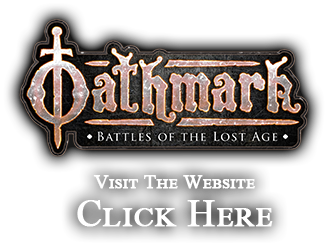































![How To Paint Moonstone’s Nanny | Goblin King Games [7 Days Early Access]](https://images.beastsofwar.com/2024/12/3CU-Gobin-King-Games-Moonstone-Shades-Nanny-coverimage-225-127.jpg)





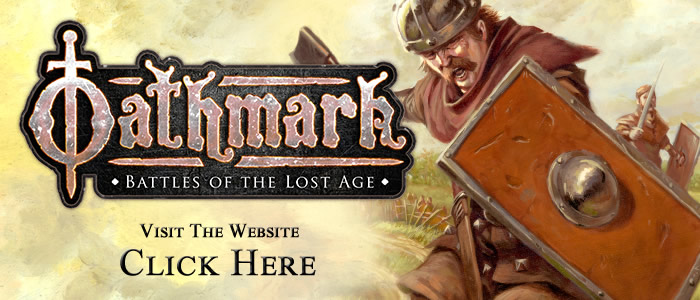

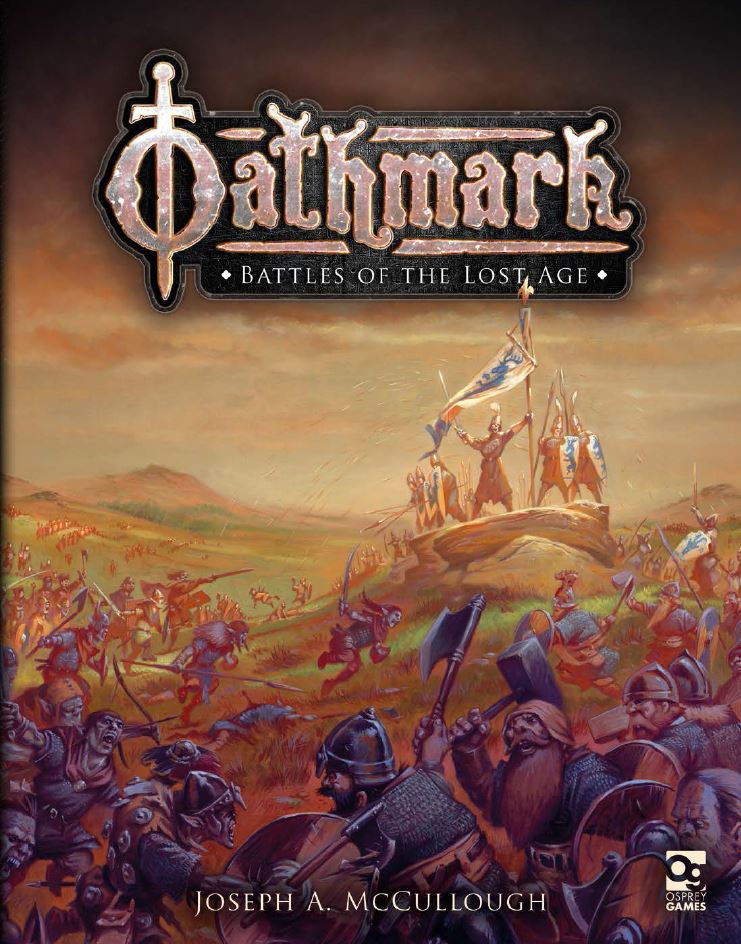
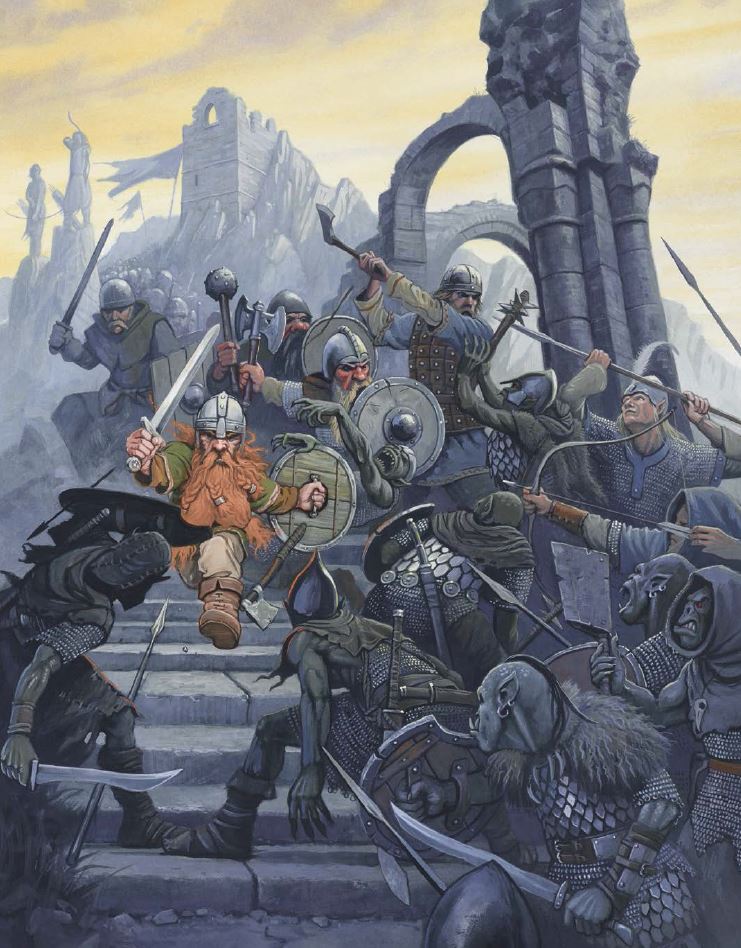
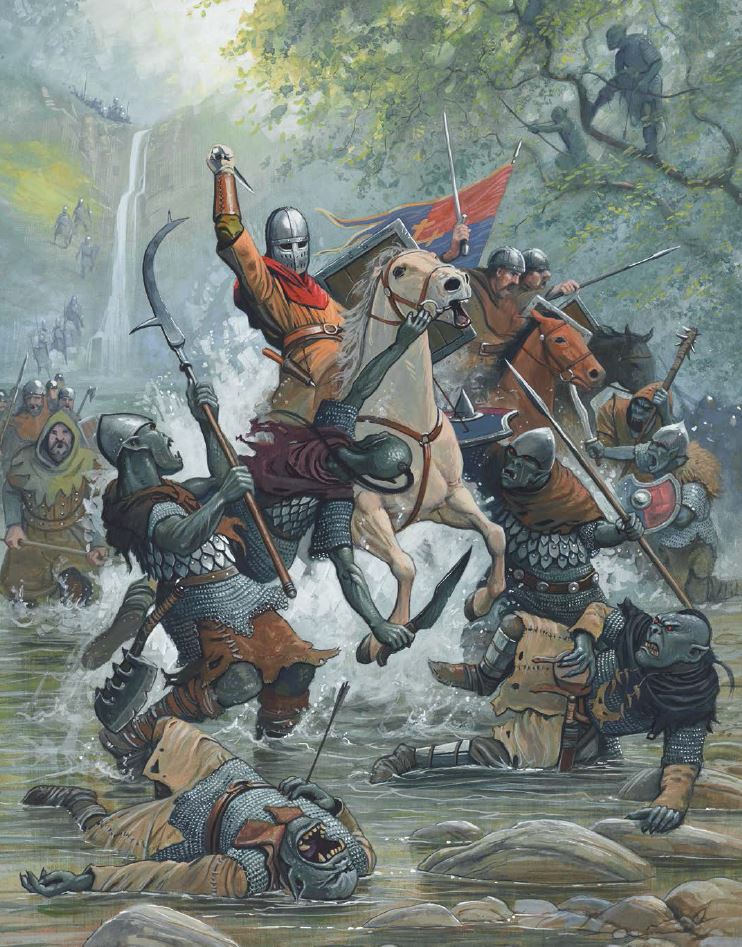
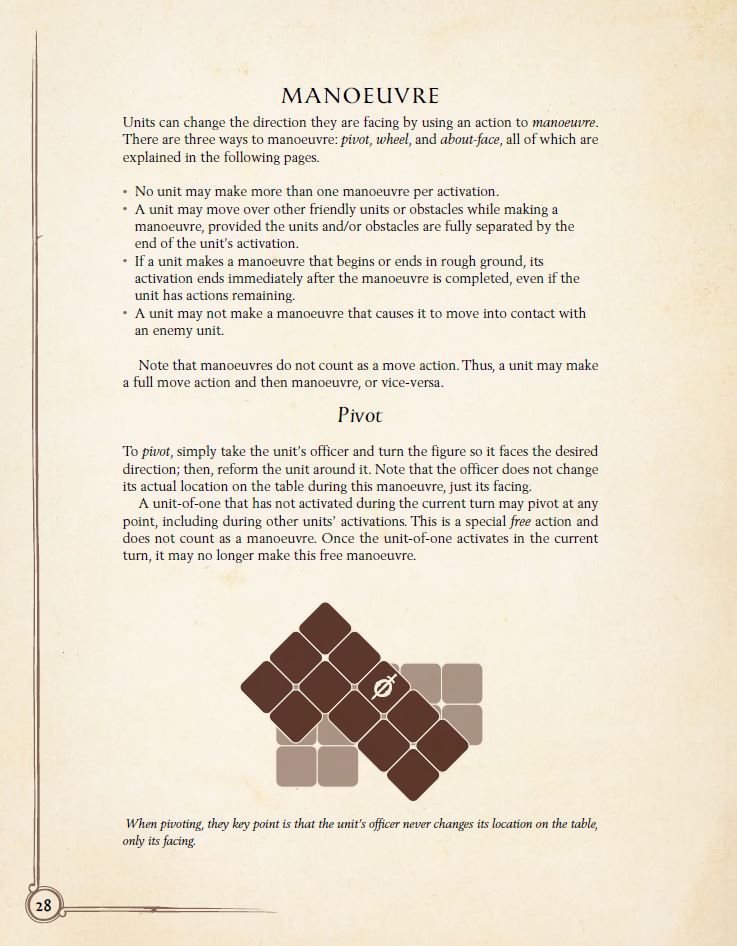
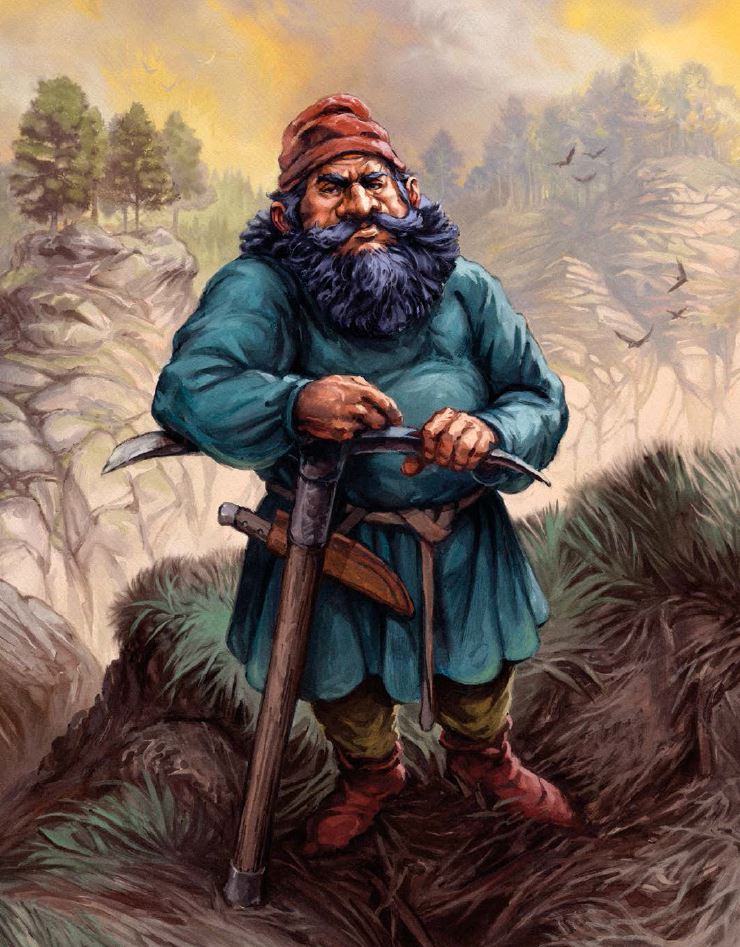
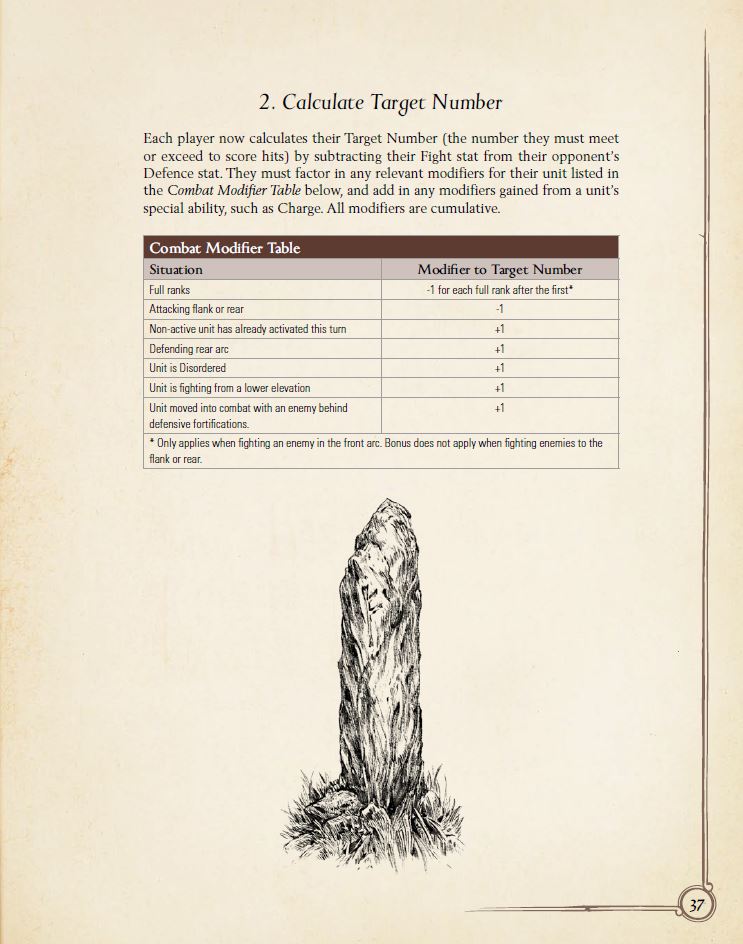
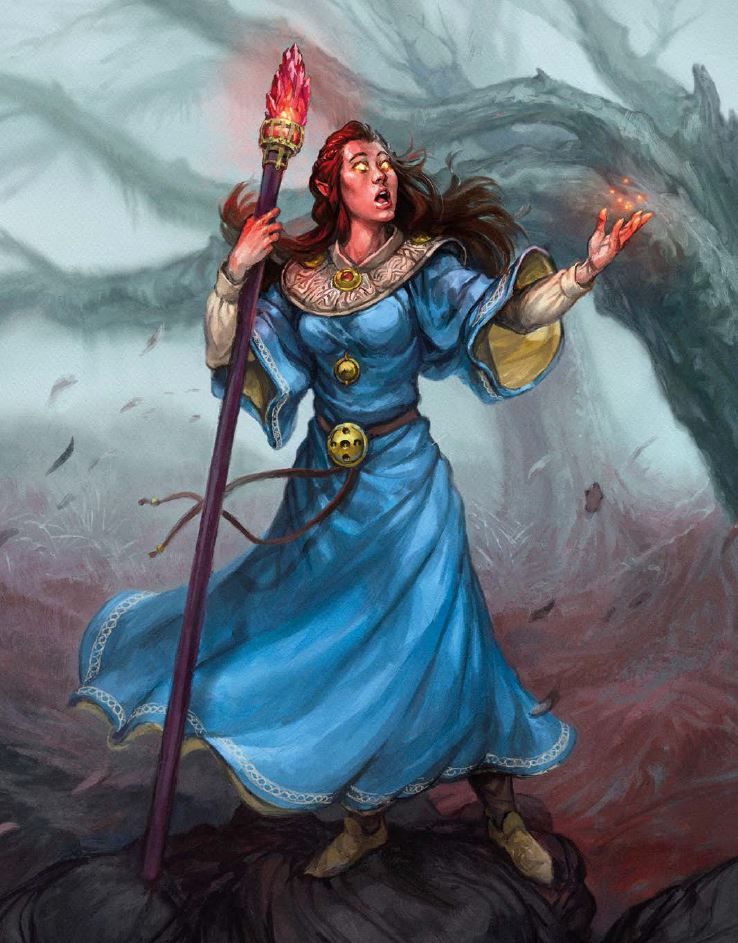
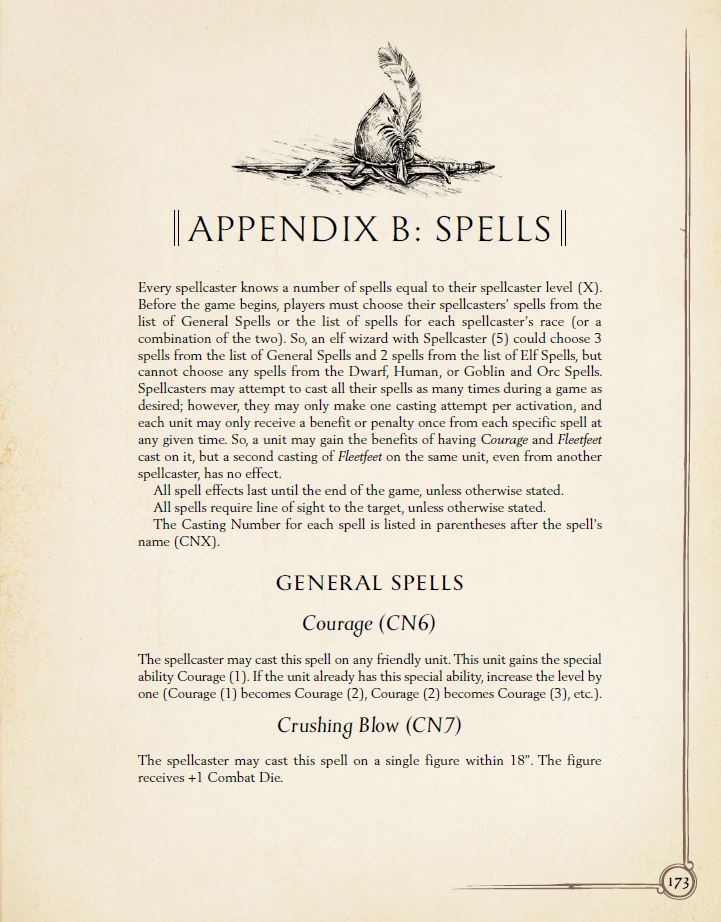
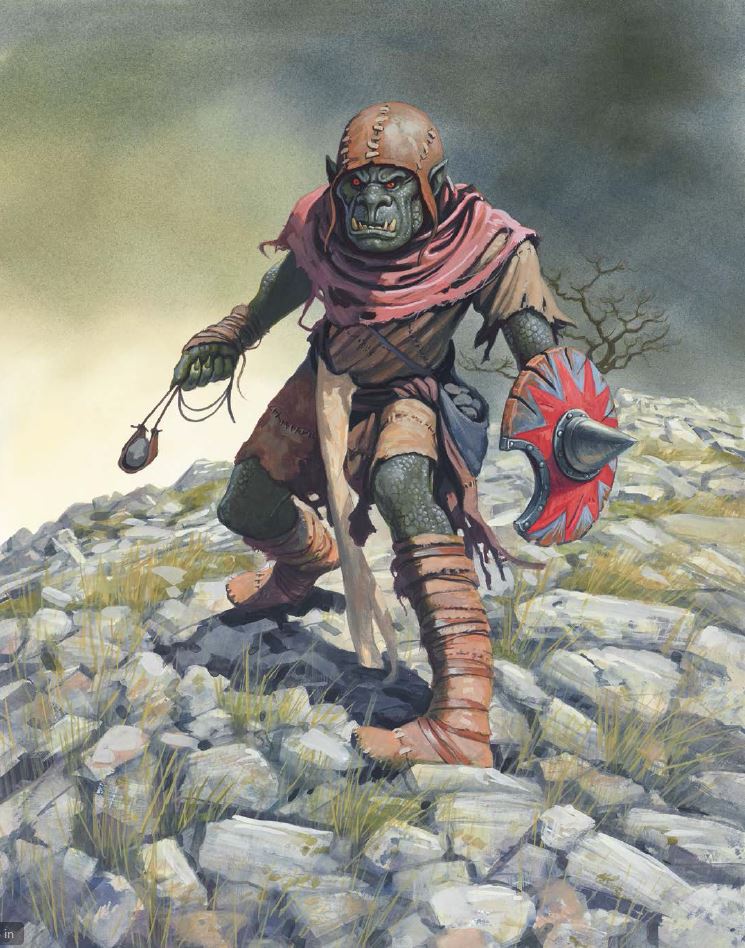

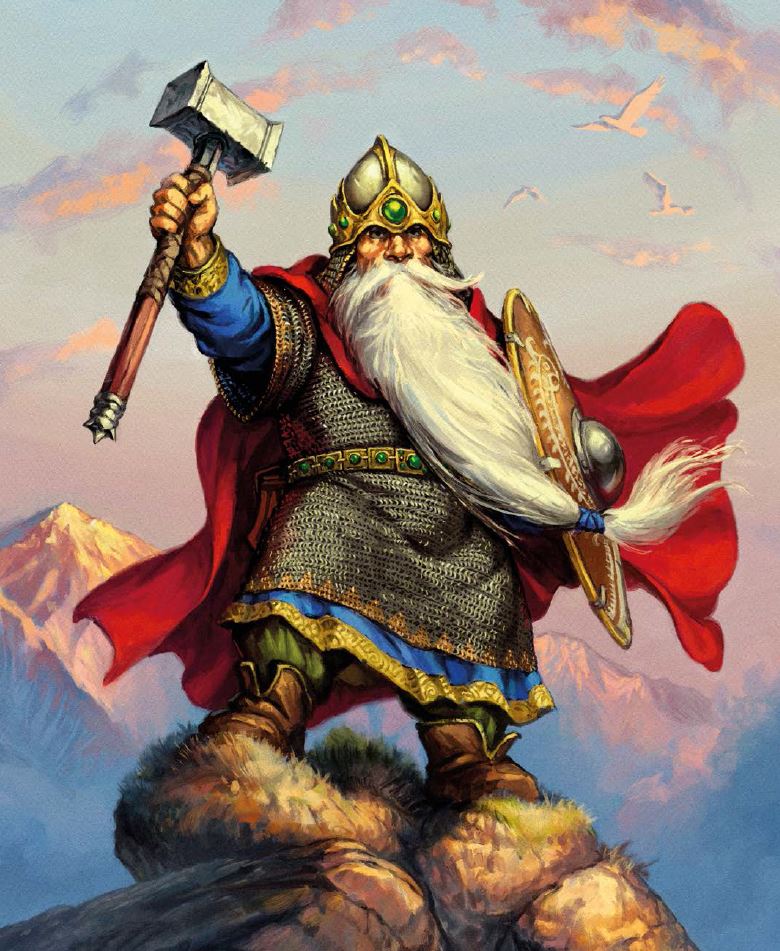































Looks interesting
Aye were going to try and get some gameplay in the can soon so you can see it in action
If folks do have questions feel free to ask and I’ll answer as best I can
Are you going to shave your beard off as a mark of shame for forsaking your dwarven brethren for the pointyears?
?
Oooh good question.
Well are you?
ANSWER HIM!!!
Is that the next Gerry Can vid – Gerry Can Shave a Dwarf.
?
…if it allows me to save my beard, I do plan to include some of them as part of my army!
Sorry, that means you only get to keep a soul patch.
;P
Noooo
Looks quite interesting and I really like the artwork.
I like the ‘old school’ look of Oathmark. I have no doubt it’s a good game and that it will do relatively well because Joe McCullough does good work.
My only real question with games these days is “Why?”. I have limited time and the choice of AoS, WHFB, SAGA, Lord of the Rings, Conquest, Erohwon, Kings of War, etc. Tell me “Why” am I playing this game instead of any of those?
Certainly not here to tell you that this is the one you should play, but I think that the real unique element of this game is the way the campaign and kingdom elements of the experience are baked into it.
I think this campaign element really adds to the game and is going to be the major draw, especially for small groups of friends. Also – the fact that you can blend together all the different races is really awesome.
I don’t mean that negativity in any way Ben. What I wouldn’t mind is comparisons with like size and genre systems.
In an age of seemly endless choices the reviews that say “it’s worth buying because the campaign system is the best fantasy campaign system currently available” is very helpful.
Oh I know, don’t worry 🙂 It’s maybe something we can do once we’ve dived in and given the game a proper go on the tabletop.
I’m going one step further on this reply and the original question. Would it be possible for OTT to do a comparison of the systems to showcase the similarities and differences between the systems. once the matrix table is formed…adding new games should be simple.
yes/no it only works if we have access to the games and enough time to get into them.
However there is the game review section on the site so if more people could be encouraged to fill that in, myself included, that would give a better idea of how games stack up.
ill watch the videos before saying if I like the game.
I’m a huge fan of Mr Joseph’s work to date. I’ll definitely pick up the book. Now which army to collect?
All of them? I mean, you can mix n match everything so why not? (Unless you’re like Ben and have previously nailed your allegiance to the mast and are now forsaking it for their ancestral enemies ?)
Haha – whilst I have clearly made my allegiance change known I am very tempted by both the Humans and the Dwarves as well, combining arms with the Elves. I like the narrative of an Ancient Elven kingdom which has come to an uneasy peace with the Dwarves in their mines who supply them with ore in exchange for protection. Plus, a young Human Lord has come to their lands and the Elves have given him space to grow his crops and farm in exchange for his soldiers should they need them.
I’m just thinking of a theme that works for me. Humans and orcs? Elves and … someone. It’s a nice problem to have.
This is an ideal lead on from our games of Frostgrave in my local gaming group, several of us have already collected a good choice of figures to offer variety in our war bands so i can see us expanding our Frostgrave campaign to see where our wizards all came from! Ideas and possibilities are on full flow here now 😉 We also have the “generic” fantasy armies sat in boxes and shelves waiting for a new system to inspire us, I think with the fun we have been having with Frostgrave, a built in campaign building system will get… Read more »
Thankfully, because the game comes with plastic models by North Star you could do some seriously fun things as you blend Frostgrave into Oathmark and vice versa – both in story terms AND with modelling. Glad that this sounds like a good fit for you.
my chaos army awaits resurrection.
Varangrrr in Kings of war is the way to go then
Im getting a very chilled casual gaming vibe from this which i really like, the back story creator is a great way of making the battles feel a bit more important too. It ould be interesting to see how well balanced the game is as i have seen some people raise concerns on this. Im jumping in as i have several WHFB armies that have sat around for too long, it will be interesting comparing this to EREHWON which in my mind is a very similar game competing for the same audience. The use of D10 is interesting too as… Read more »
I taught Erehwon to 12 year olds and now they are rules lawyering me with the iij r pesky elves all the time. To my surprise we really enjoy the D10 mechanic playing 1000 to 2000 points of WoE
Not a fan of the author.. but I think these rules will resonate with my local scene.
To me, It seems like a true “Rank and File” ruleset.. Conquest being the only other to drag itself from the ashes of WHFB, but the Conquest models are garbage (IMNSHO) and have strayed too far from the typical fantasy/Tolkien tropes. So consider me… cautiously optimistic.
It is very much a game which dives into Rank n’ Flank at the core of it. A lot of the skill is going to be in the army composition and movement choices you make…plus it is very Tolkien!
Exactly, which I think will mean good things for it.
I preordered this a while back when I ordered Rangers of Shadow Deep. Hoping this will be my new WHFB with a campaign twist. This supports allies? So will it support a mercenary band or a bandit army? Are there limitations on allies or could you put a mercenary band together with hedge knights, orcs, trolls, bandits etc.? This could be great fun.
Yeah – the game rules allow you to build a force made up of Elves, Humans, Dwarves and Goblins/Orcs. So, if you wanted to do a Human army for example with a band of scheming bandits + have some sneaky goblins on the side you could
@Brennon Left you a question below about army list building for Oathmark. Is it still coming out in April?
Between April 18th and 30th seems to be the dates right now
April 18th sounds very much like a Salute pick up to me 🙂
This is one that I have been watching. Your wright up was so good that I went and pre-ordered it 🙂 You are such a bad influence.
Haha good to know
This will be very interesting to watch for. I’m currently loving A Song of Ice & Fire TMG and just how elegant that system plays. For me, it’s the best rank and file I’ve ever played. But if you don’t like/care for the books and those characters Martin has created/killed, then you just won’t give that game a chance. This one seems to tickle that old world of fantasy stories that felt, dare I type, neutral. Which would bring people in to echo what that means to them, which is really cool. It’s exciting to see what this will become… Read more »